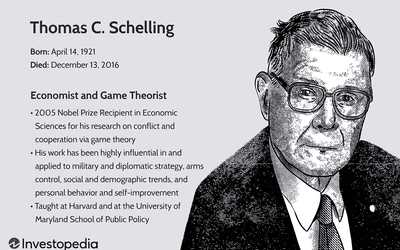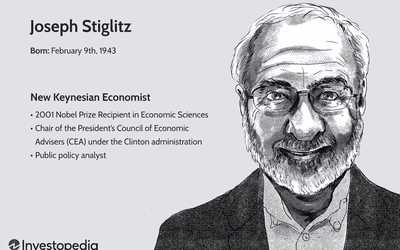John R. Hicks: A Pioneer in Macroeconomics
John R. Hicks was a renowned economist who made significant contributions to the field of macroeconomics. Born on April 8, 1904, in England, Hicks became one of the most influential economists of the 20th century.
His pioneering work in macroeconomics revolutionized the way economists analyze and understand the aggregate behavior of economies. Hicks was instrumental in developing the IS-LM model, which became a cornerstone of macroeconomic analysis.
Hicks also made significant contributions to the theory of income and employment. He introduced the concept of “effective demand,” which refers to the level of aggregate demand that is sufficient to generate full employment in an economy. This concept challenged the prevailing classical economic theory, which argued that markets would naturally reach full employment equilibrium.
Throughout his career, Hicks received numerous accolades for his contributions to economics. In 1972, he was awarded the Nobel Prize in Economic Sciences for his pioneering contributions to general equilibrium theory and welfare economics.
John R. Hicks’ work continues to have a lasting impact on the field of macroeconomics. His models and theories are still widely taught and used by economists to analyze and understand the complexities of modern economies. His insights have shaped the way policymakers approach economic issues and have influenced the development of economic policy worldwide.
Biography of John R. Hicks

John Richard Hicks was a renowned British economist who made significant contributions to the field of macroeconomics. He was born on April 8, 1904, in Warwick, England. Hicks grew up in a middle-class family and showed an early interest in mathematics and economics.
After completing his education at Clifton College and Balliol College, Oxford, Hicks began his academic career as a lecturer at the London School of Economics. He later taught at the University of Manchester and the University of Oxford, where he held the prestigious Drummond Professorship of Political Economy.
Hicks’ research focused on various aspects of macroeconomics, including income distribution, monetary theory, and economic fluctuations. He was particularly interested in the relationship between consumption, investment, and saving, and his work laid the foundation for the Keynesian theory of aggregate demand.
In addition to his research, Hicks was also known for his teaching and mentoring abilities. He inspired and influenced many students who went on to become prominent economists themselves. Hicks’ clear and logical approach to economic analysis made complex concepts accessible to students and helped shape the field of macroeconomics.
Throughout his career, Hicks received numerous accolades for his contributions to economics. He was awarded the Nobel Prize in Economic Sciences in 1972, jointly with Kenneth Arrow, for their pioneering contributions to general equilibrium theory and welfare economics.
Achievements of John R. Hicks

John R. Hicks was a renowned economist who made significant contributions to the field of macroeconomics. Throughout his career, he achieved numerous milestones and his work continues to have a lasting impact on the discipline. Here are some of his notable achievements:
- IS-LM Model: Hicks is best known for developing the IS-LM model, which stands for Investment-Saving and Liquidity Preference-Money Supply. This model has become a cornerstone of macroeconomic analysis and is widely used to understand the relationship between interest rates, output, and money supply in an economy.
- Aggregate Demand Theory: Hicks made significant contributions to the theory of aggregate demand. He expanded on the work of John Maynard Keynes and developed the concept of the consumption function, which explains how changes in income affect consumption patterns in an economy.
- Welfare Economics: Hicks also made important contributions to the field of welfare economics. He developed the concept of compensating variation, which measures the monetary value of the welfare change resulting from a policy or economic change. This concept has been widely used to evaluate the impact of various policies on social welfare.
- Pricing and Capital Theory: Hicks made significant contributions to the theory of pricing and capital. He developed the concept of “Hicksian demand,” which measures the demand for a good based on its price and the consumer’s income. This concept has been widely used to analyze consumer behavior and market equilibrium.
- Nobel Prize in Economics: In recognition of his groundbreaking contributions to economics, Hicks was awarded the Nobel Prize in Economic Sciences in 1972. His work on the IS-LM model and welfare economics played a crucial role in shaping the field of macroeconomics.
Overall, John R. Hicks was a pioneer in the field of macroeconomics and his achievements continue to shape the discipline. His work on the IS-LM model, aggregate demand theory, welfare economics, pricing, and capital theory have had a profound impact on economic analysis and policy-making.
Lasting Impact of John R. Hicks

John R. Hicks, a renowned economist, has left a lasting impact on the field of macroeconomics. His contributions have shaped the way economists analyze and understand the economy, and his theories continue to be influential today.
IS-LM Model

Aggregate Demand and Supply
Additionally, Hicks developed the concept of the short-run aggregate supply curve, which shows the relationship between the price level and the level of output in the short run. This concept helps economists analyze the effects of changes in aggregate demand or supply on the overall level of output and inflation in the economy.
Welfare Economics
Hicks also made significant contributions to welfare economics. He developed the concept of compensating variation, which measures the monetary value of the welfare change resulting from a policy or economic change. This concept has been widely used to analyze the distributional effects of policies and to assess the overall welfare impact of different economic decisions.
Dynamic Economics
In addition to his contributions to macroeconomics, Hicks also made important contributions to the field of dynamic economics. He developed the concept of the “Hicksian” method, which is a technique for analyzing the effects of changes in economic variables over time. This method has been widely used in the analysis of investment decisions, economic growth, and business cycles.

Emily Bibb simplifies finance through bestselling books and articles, bridging complex concepts for everyday understanding. Engaging audiences via social media, she shares insights for financial success. Active in seminars and philanthropy, Bibb aims to create a more financially informed society, driven by her passion for empowering others.
